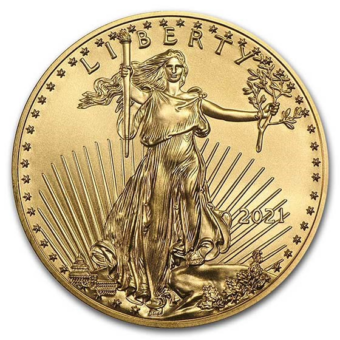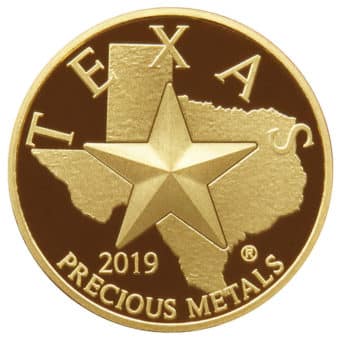A Daily Journey Through the Week's Market
Monday - 4.08.24: Gold prices reached a new overnight high of $2354.04/oz before settling at $2327.44, with silver also seeing a slight increase. We’re noticing a shift in the dominance in pricing, spurred by rising demand in China and central bank acquisitions. This shift, along with the decoupling of gold prices from U.S. real interest rates since the Ukraine conflict in 2022, suggests a major change in market dynamics, driven by a move towards gold as a neutral reserve asset in response to geopolitical tensions and financial instability, marking a trend towards "hidden de-dollarization."
Tuesday - 4.09.24: Gold and silver prices surged to new highs, with June Comex gold hitting $2,384.50 and May Comex silver reaching $28.29, signaling increased bullish sentiment among traders for both metals. Gold notably outperformed the S&P 500 this year, reflecting its status as a safe-haven asset. Meanwhile, stock indexes in Asia and Europe showed strength, and U.S. stock indexes were poised for a firm start. The U.S. economic calendar is light, with key data including the consumer price index and Federal Open Market Committee meeting minutes due this week.
Wednesday - 4.10.24: Gold prices fell over 1% early Wednesday following a higher-than-expected U.S. inflation report, trading down at $2327.87, while silver dropped to $27.70. India's silver imports soared to a record in February 2024, rising 260% from the previous month, fueled by reduced import duties and large purchases from the UAE. As the world's biggest silver consumer, India imported 2,295 metric tons of silver in February, contributing to a forecasted 66% annual increase in imports. This demand surge, primarily driven by the fabrication and solar industries, alongside investment interests, suggests a potential rebound in 2024 with estimates of 6,000 tons, despite an oversupply causing a drop in local prices and reduced March imports.
Thursday - 4.11.24: Gold prices increased, ending the day at $2,377.51, marking a rise of $42.51. Silver also saw an uptrend, closing at $28.51, up by $0.54 from the previous day. This movement in gold and silver prices could be seen in the context of Producer Price Index (PPI) data, indicating that inflation has become far stickier than the Federal Reserve had anticipated.
Friday- 4.12.24: Gold and silver prices surged to new highs amid escalating geopolitical tensions and market unease. Gold reached a record peak of $2,408.00, while silver hit a three-year high at $29.03, fueled by safe-haven demand amidst growing concerns over an Israeli assault against Iran and continuous threats, including Iran's potential blockade of the crucial Strait of Hormuz. Mixed performances in Asian and European stock indexes and a dip in U.S. stock futures further underscore the global financial landscape's fragility, alongside a stronger U.S. dollar and rising crude oil prices.
Wholesale Inflation Marks Highest Rise Since April 2023
In March, the U.S. witnessed a significant rise in wholesale inflation, marking the highest increase since April 2023, as reported by the Labor Department. The producer price index (PPI) grew by 0.2% monthly, with an annual escalation of 2.1%, underscoring persistent price pressures in the economy. Core inflation also rose, challenging the Federal Reserve's rate adjustment plans amidst ongoing financial strain on U.S. households. This uptick in wholesale and consumer inflation levels complicates the Fed's strategy for interest rate cuts, as it aims to ensure inflation is under control before taking action, despite the evident impact of high prices on everyday living costs for Americans, particularly those in lower-income brackets.
Gold Demand Stands Firm Against Fiscal Madness
Kristina Hooper, Invesco's chief investment strategist, emphasizes that gold investors are largely unfazed by rising opportunity costs associated with higher bond yields, as their focus lies on hedging against fiscal excess amidst global economic and geopolitical uncertainties. Despite recent inflation spikes and speculation on Federal Reserve interest rate adjustments, gold's appeal remains strong, trading near record highs. Hooper suggests that gold serves as a crucial safeguard against the proliferation of debt and the fragmentation of the global currency market, bolstering its popularity. Even as Western investors pull back from gold ETFs, robust physical demand, particularly in Asia, and significant sales of gold bars at major retailers like Costco, underscore gold's enduring attraction. Hooper projects further upside for gold, driven by its role as a hedge against fiscal instability and the ongoing demand from different sectors, indicating that the metal's current rally could have lasting momentum.
Gold's Record Surge: Central Banks and Consumers Flock to Safe Haven Amid Economic Shifts
Gold prices have reached new heights, with spot gold hitting $2,364 per ounce, driven by a combination of factors including Federal Reserve rate cut expectations, central bank purchases led by China, and investor sentiment toward gold as a hedge against inflation and economic uncertainty. Central banks, viewing gold as a long-term value store, have been diversifying away from US dollars amidst geopolitical tensions, with countries like China, India, and Turkey significantly increasing their gold reserves. This shift, alongside increased consumer interest evidenced by strong sales at retailers like Costco, indicates a broad-based move towards gold amid global economic shifts and anticipations of changes in US monetary policy. The trend reflects concerns over inflation, the US economy's direction, and geopolitical events, underlining gold's enduring appeal as a safe haven investment.
Analyst Predicts the Gradual Decline of the US Dollar's Dominance
The global status of the US dollar as the primary reserve currency is under threat, according to financial experts, due to various economic pressures and the emergence of strong local and digital currencies. With a significant 25% loss in purchasing power, the US dollar is facing a crisis of confidence among investors, further exacerbated by the US's soaring debt, now at $34 trillion. Analyst Amir Kumar Gupta highlights the challenges facing the dollar, including a decrease in its use for global trade and declining reserves held by central banks, signaling a potential steady decline in its status over the coming years. This shift is attributed to a combination of factors, including the US-China trade conflict, which has shifted technological advantages and may bolster the trade terms for commodity-producing emerging economies. The potential decline of the US dollar as a key global currency could lead to increased investment in alternative assets like gold, silver, and cryptocurrencies, while posing inflationary and geopolitical risks that necessitate a careful rebalancing of US economic policies.
Persistent Inflation Dampens Hopes for Immediate Fed Rate Cuts
Inflation continued its upward trajectory in March for the third consecutive month, surpassing expectations and maintaining elevated living costs for Americans. According to the Labor Department, the consumer price index rose by 0.4% in March from February, and saw a year-on-year increase of 3.5%, both figures exceeding economists' predictions. Core inflation, excluding food and energy, mirrored this rise, further indicating entrenched inflationary pressures. This stubborn inflation, primarily driven by housing and gasoline costs, challenges the Federal Reserve's target of 2% and complicates the potential for interest rate reductions. With Federal Reserve officials expressing caution and revising rate cut expectations, the latest data casts doubts on the likelihood of easing monetary policy soon, affecting market sentiment and investor forecasts. This scenario underscores the financial strain on U.S. households, especially those with lower incomes, and signals a cautious path forward for the Fed amidst ongoing inflation concerns.
Zimbabwe Introduces Gold-Backed ZiG Currency to Stabilize Economy
In a move to curb the persistent devaluation of its local currency, Zimbabwe has announced the launch of a new currency named the ZiG (Zimbabwe Gold), backed by a combination of foreign currency and gold. Central Bank Governor John Mushayavanhu, addressing a press conference in Harare, revealed that the ZiG aims to provide stability to Zimbabwe's economy, which has struggled with hyperinflation and currency depreciation for years. Launching at a rate of 13.56 per ZiG to the USD and supported by a new interest rate of 20%, the ZiG replaces the highly inflated local dollar. This transition marks Zimbabwe's sixth attempt since 2008 to establish a functional currency, following periods of extreme inflation that rendered previous currencies ineffective. By backing the ZiG with substantial gold and foreign currency reserves, including $100 million in cash and 2,522 kilograms of gold worth $185 million, Zimbabwe's central bank intends to ensure the currency's stability and rebuild public confidence. The introduction of the ZiG, coupled with strict monetary policies, aims to significantly reduce annual inflation to between 2% and 5% and monthly inflation to below 1% by the end of the year.
Global Shift: Seven Nations Test Tokenization, Eyeing BRICS Competition
As the BRICS nations advance their digital currency initiatives, a new tokenization project named Project Agorá has emerged, seeing participation from seven countries, including France, Japan, Korea, Mexico, Switzerland, England, and the United States (via the Federal Reserve Bank of New York). This effort, in collaboration with the Bank of International Settlements (BIS), aims to explore the tokenization of cross-border payments, signaling a significant move towards digital financial systems. This project is set against the backdrop of the BRICS alliance's push for de-dollarization and the adoption of blockchain-based payment systems, highlighting a growing global interest in digital currencies and tokenization as tools for transforming the international monetary landscape. The involvement of major economies and financial institutions indicates a robust response to the BRICS' digital endeavors, potentially setting the stage for heightened global competition in digital finance and efforts to reduce dependence on the US dollar.
Gold's Rally Just Beginning: Expect More Surges, Says abrdn's Robert Minter
In a recent interview with Kitco News, Robert Minter of abrdn highlighted the gold market's current rally, stating that the climb to over $2,350 an ounce is just the start. Minter, the Director of Investment Strategy at abrdn, believes that the entrance of retail investors into gold-backed exchange-traded funds (ETFs) will significantly propel the market. Despite a lukewarm investment demand and a cessation in ETF gold selling, central banks' consistent demand for gold indicates a strong market underpinning. Minter suggests that prudent diversification strategies away from the dollar by central banks are a driving force. He speculates that a rate cut by the Federal Reserve could rekindle Western investors' interest in gold. With the U.S. facing financial pressures from high credit card debt and rising insurance premiums, Minter anticipates an inevitable easing of interest rates, which historically has led to substantial increases in gold prices. Following a nearly 19% rally in gold prices since early February, Minter asserts the market still holds significant untapped value, with historical precedents suggesting potential for more dramatic increases.
Impending Banking Crisis: A Dire Prediction of Systemic Insolvency
Lynette Zang, CEO of Zang Enterprises & LynetteZang.com, forecasts a grim future for the banking sector, suggesting that an imminent collapse is on the horizon, exacerbated by insolvency across the board. More than a year after the significant bank failures of March 2023, the sector appears even more precarious, facing challenges from rising interest rates and a massive load of undervalued debt holdings. Zang criticizes the Federal Reserve's strategies, suggesting that their efforts have rendered all banks insolvent by inflating government debt, with rising interest rates now undermining the value of these assets. The upcoming crisis, according to Zang, could be profound, potentially catalyzing a shift towards central bank digital currencies (CBDCs) under the guise of financial innovation and stability. She warns of a sweeping wealth transfer within the banking and private equity sectors and suggests that Bitcoin might inadvertently pave the way for CBDCs, underscoring the need for public readiness and resilience against these impending economic shifts.
Next Week’s Key Events
Monday, April 15
● 2:30 am: Dallas Fed President Lorie Logan speaks in Tokyo
● 8:30 am: Empire State Manufacturing Survey (April)
● 8:30 am: U.S. Retail Sales (March)
● 8:00 pm: San Francisco Fed President Mary Daly speaks
Tuesday, April 16
● 8:30 am: Housing Starts and Permits (March)
● 9:15 am: Industrial Production & Capacity Utilization (March)
Wednesday, April 17
● 5:30 pm: Cleveland Fed President Loretta Mester speaks
Thursday, April 18
● 8:30 am: Initial Jobless Claims (April 13)
● 8:30 am: Philadelphia Fed Manufacturing Survey (April)
● 9:15 am: New York Fed President John Williams speaks
● 10:00 am: Existing Home Sales (March)
● 10:00 am: U.S. Leading Economic Indicators (March)
● 11:00 am: Atlanta Fed President Raphael Bostic speaks
● 5:45 pm: Atlanta Fed President Raphael Bostic speaks again
Friday, April 19
● 10:30 am: Chicago Fed President Austan Goolsbee speaks
IMPACT ON PRECIOUS METALS MARKETS
Fed Presidents' Speeches: Speeches by Federal Reserve Presidents, such as those by Lorie Logan, Mary Daly, Loretta Mester, John Williams, Raphael Bostic, and Austan Goolsbee, can influence gold and silver prices through their insights on monetary policy. If the speeches hint at tighter monetary policy or higher interest rates, gold and silver prices might decrease due to the higher opportunity cost of holding non-yielding assets. Conversely, dovish statements can lead to higher gold and silver prices.
Empire State Manufacturing Survey: This report indicates the health of the manufacturing sector in New York State. A stronger-than-expected report may boost the USD, negatively affecting gold and silver prices as they become more expensive for holders of other currencies. Conversely, a weak report can decrease the USD value, potentially increasing gold and silver prices.
U.S. Retail Sales: This is a key indicator of consumer spending. Higher-than-expected retail sales suggest a strong economy, possibly leading to higher interest rates and a stronger USD, negatively impacting gold and silver prices. Lower than expected retail sales could indicate economic weakness, potentially bullish for gold and silver as safe-haven assets.
Housing Starts and Permits: Indicates the health of the U.S. housing market. A strong housing report can lead to a stronger USD as it suggests economic strength, potentially negatively impacting gold and silver. A weak report may have the opposite effect.
Industrial Production & Capacity Utilization: These indicators show the real output of the manufacturing, mining, and utilities sectors and how fully the nation's resources are being used. Strong reports can signal economic health, possibly leading to higher USD and lower gold and silver prices, while weak reports can signal economic slowdowns, possibly bullish for gold and silver.
Initial Jobless Claims: Weekly data that provides insights into the labor market. Lower than expected claims can signal a strong labor market, possibly leading to a stronger USD and lower gold and silver prices. Higher claims can signal weakness, potentially bullish for gold and silver.
Philadelphia Fed Manufacturing Survey: Similar to the Empire State Manufacturing Survey but for the Philadelphia region. Its implications for gold and silver prices are similar to those of the Empire State Manufacturing Survey.
Existing Home Sales: This report indicates the health of the U.S. housing market. Strong sales suggest economic confidence, potentially strengthening the USD and negatively impacting gold and silver prices. Conversely, weak sales may signal economic uncertainty, potentially boosting the appeal of gold and silver as safe havens.
U.S. Leading Economic Indicators: This index forecasts future economic activity. Strength in these indicators may lead to a stronger USD, negatively affecting gold and silver prices. Weakness signals potential economic challenges, which could increase the demand for gold and silver as safe-haven assets.





















